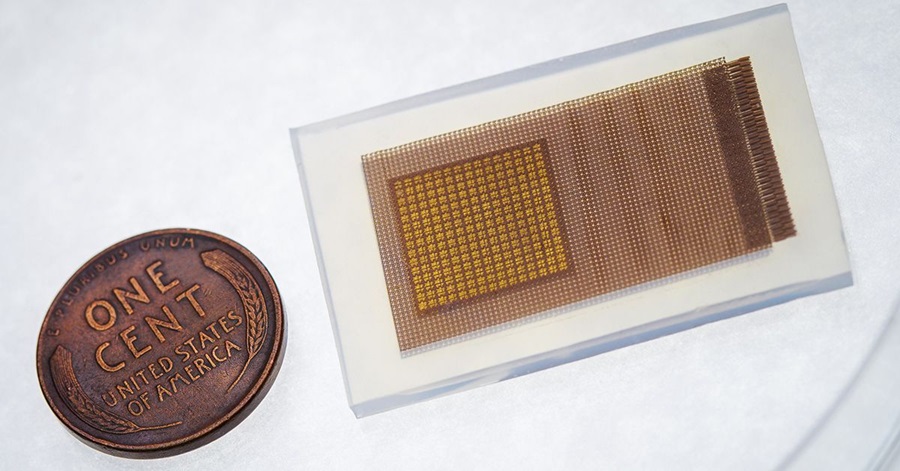Wearable Ultrasound Patch Continuously Monitors Cerebral Blood Flow
Posted on 24 May 2024
The standard clinical method for monitoring cerebral blood flow, transcranial Doppler ultrasound, depends on a skilled technician holding an ultrasound probe against the patient’s head. This method, however, has limitations. It is operator-dependent, which means the accuracy of the readings can vary with the operator's skill. Moreover, it is not suitable for continuous monitoring, as cerebral blood flow is usually checked only at specific times during the day, which may not capture fluctuations occurring at other times. Now, a wearable ultrasound patch overcomes these hurdles by offering a hands-free, consistent, and comfortable solution for monitoring cerebral blood flow that patients can wear continuously throughout their hospital stay.
Developed by engineers at the University of California San Diego (La Jolla, CA, USA), this wearable ultrasound patch allows for the continuous, non-invasive monitoring of cerebral blood flow. The patch, which is soft, stretchy, and worn on the temple, provides three-dimensional blood flow data, a first for wearable technology. This innovation is particularly beneficial for patients undergoing or recovering from brain surgery, representing a significant advancement over traditional transcranial Doppler ultrasound. The patch is about the size of a postage stamp and is made from a silicone elastomer containing several layers of stretchy electronics. It includes an array of small piezoelectric transducers that emit and receive ultrasound waves to measure blood flow.

Another essential feature of the patch is a copper mesh layer made of spring-shaped wires that enhance signal quality by reducing interference from the body and external environment. Additional layers include stretchable electrodes that support the patch’s functionality. For operation, the patch connects via cables to a power source and a computer. The system utilizes ultrafast ultrasound imaging to perform 3D monitoring. Unlike conventional ultrasound, which captures around 30 images per second, ultrafast imaging captures thousands, crucial for collecting detailed data from the piezoelectric transducers, which could otherwise be diminished by the strong reflection from the skull. Data are then processed using specialized algorithms to reconstruct three-dimensional details such as the size, angle, and position of the major brain arteries.
Researchers tested the ultrasound patch on 36 healthy volunteers to assess its ability to measure blood flow velocities—peak systolic, mean flow, and end-diastolic velocities—in the brain’s major arteries. The study participants undertook activities that affected blood flow, such as hand-gripping, breath-holding, and reading. The measurements of the ultrasound patch were almost similar to those obtained using a conventional ultrasound probe. The researchers will now collaborate with clinicians at UC San Diego School of Medicine to test the ultrasound patch on patients suffering from neurological conditions that affect cerebral blood flow.
“The continuous monitoring capability of the patch addresses a critical gap in current clinical practices,” said study co-first author Sai Zhou.
“The cerebral vasculature is a complex structure with multiple branching vessels. You need a device capable of capturing this three-dimensional information to get the whole picture and obtain more accurate measurements,” added Xinyi Yang, another co-first author of this study.
Related Links:
UC San Diego














